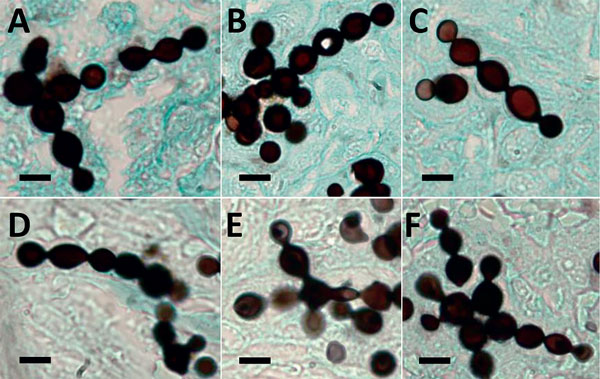Volume 22, Number 12—December 2016
Research
Cutaneous Granulomas in Dolphins Caused by Novel Uncultivated Paracoccidioides brasiliensis
Figure 1

Figure 1. Infected tissues from 6 bottlenose dolphins (Tursiops truncatus) with paracoccidioidomycosis ceti, Indian River Lagoon, Florida, USA, showing typical branching chains of yeast-like cells of Paracoccidioides brasiliensis connected by small isthmuses. A) Strain FB-921; B) FB-938; C) FB-946; D) FB-952; E) B92-932; F) SW070458. Gomori’s methenamine silver stained. Scale bars indicate 10 µm.
Page created: November 29, 2016
Page updated: November 29, 2016
Page reviewed: November 29, 2016
The conclusions, findings, and opinions expressed by authors contributing to this journal do not necessarily reflect the official position of the U.S. Department of Health and Human Services, the Public Health Service, the Centers for Disease Control and Prevention, or the authors' affiliated institutions. Use of trade names is for identification only and does not imply endorsement by any of the groups named above.